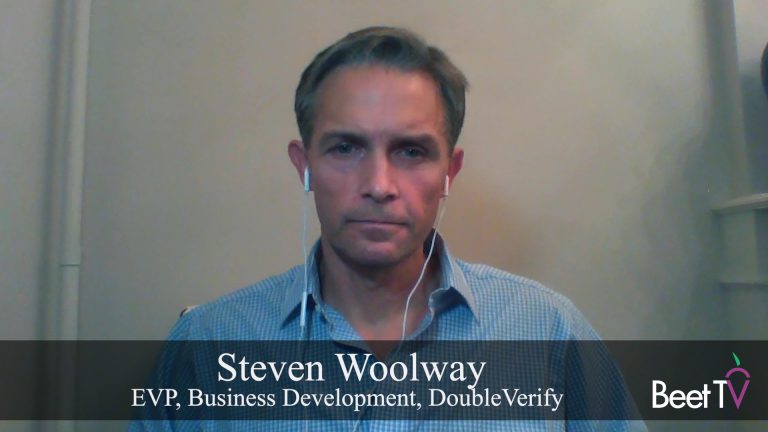
If you thought your connected TV was fraud-free, Steven Woolway has some data points for you.
“We identified – just this year, in the first half of this year – 800 fraudulent apps. That was more than we identified in all of 2019,” says Woolway.
He should know. As EVP, Business Development, at fraud and viewability ad-tech vendor DoubleVerify, Woolway is charged with answering a growing volume of ad buyers’ questions over a practice that, until recently, connected TV was believed to be immune from.
In this video interview with Beet.TV, Woolway explains the scale of TV ad fraud – and what can be done to stop it.
Fraud vectors
Although it was first launched in 2008, DoubleVerify says ad fraud tactics have developed.
“Fast-forward to today, and it’s a much more complex environment,” Woolway says. He describes the following methods:
- Bot fraud: Scripts mimicking human browser behavior.
- Ad spoofing: “An ad impression is being represented to a buyer that it really isn’t – typically.” For example, a desktop display impression presents itself as a pricier video or CTV impression.
- IP address spoofing: An internet location masquerades as another.
- Mobile malware: Nefarious software installed on phones is triggering fake views.
- Session fraud: “The fraudster themselves buys the ad impression and generated multiple ad impressions based into that one ad call.”
Those methods have come to connected TV platforms. “Fraud follows the money, and CTV is an incredibly hot channel right now for our customers.”
Fraud Lab
In the new war on fraud, DoubleVerify’s cavalry is Fraud Lab, a group data scientists and analysts it assembled a decade ago and which began looking at the growing TV fraud problem in 2018.
Woolway says the Fraud Lab has a two-pronged attack mechanism to overcome the problem:
- “A machine-learning, automated algorithm that is out there scanning the massive amounts of data that DoubleVerify has access to. We’re integrated into every major DSP that’s out there. We have billions and billions of ad impressions running daily through our ad tags. machine learning comes in, pours over these massive amounts of data.”
- “Human experts come in, review the patterns that the algorithms picked up. They feed tuning into the algorithms to keep the algorithms up to speed.”
First 48 hours
The killer problem is that 75% of the damage that any bot will do will occur within its first 48 hours of activity.
During that time, hundreds of thousands of dollars worth of advertising spend may have been misspent.
So DoubleVerify pushes updated “fraud tables” 100 times a day, taking account of new tactics and perpetrators.
“Every new channel requires a different look,” Woolway adds. “When we started, we were looking at site map fraud on site and a bot fraud on desktop. Well, now with CTV, we’re finding some of the old schemes, but we’re finding brand new ways that these fraudsters are perpetrating in order to generate ad fraud.”
You are watching “CTV Grows Up: Making a New Medium More Efficient & Effective,” a Beet.TV series presented by DoubleVerify. For more videos, please click here.